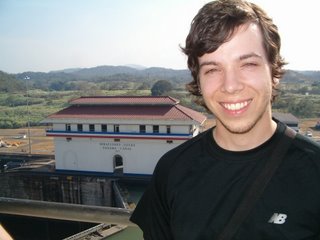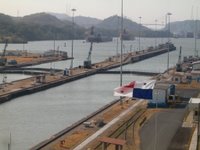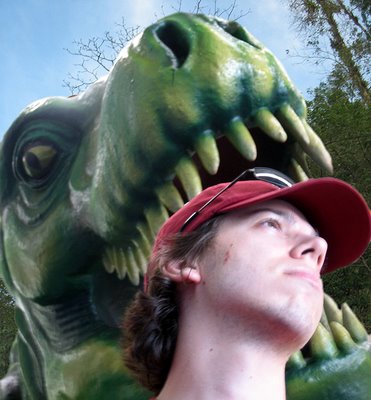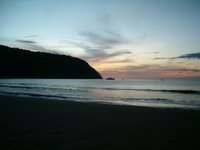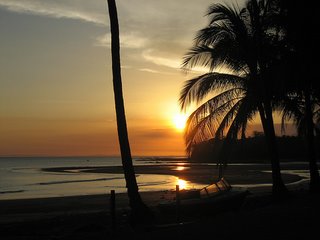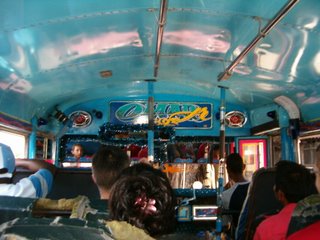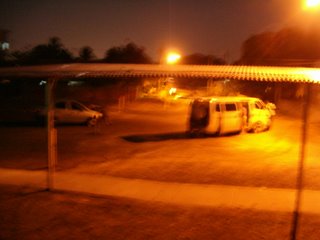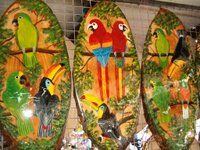 We had done the posh American-style malls, the roadside stands, the army surplus stores and the supermarkets. Only one shopping venue remained on our list: an outdoor market in El Valle de Anton, a small town about 1 1/2 hours drive from Panama City.
We had done the posh American-style malls, the roadside stands, the army surplus stores and the supermarkets. Only one shopping venue remained on our list: an outdoor market in El Valle de Anton, a small town about 1 1/2 hours drive from Panama City.This market was supposedly less expensive than the malls, and although it promised to be very "touristy," we figured we could find good bargains on souvenirs for all our folks back home. After finding our turn-off from the Pan-American highway, we snaked around hills and descended into the valley.
When we first pulled up, I wondered if we were in the right place. It's not that the valley was anything less than I expected; it's just that pale-skinned tourists swarmed the area. I had expected a few Americans and maybe even some Germans, but so far, white shoppers outnumbered the Panamanian vendors.
The whole town is basically one street with shops lining both sides. There's a grocery store on the way in, and as far as I could tell, only one small place to eat indoors. After we had waded through the many of the booths, we pulled up a stool at a roadside food stand. We ordered hamburgers and batidos (fruit shakes), and we splurged for the 25-cent cup of Pepsi that came with the burger. For some reason, Panamanians false advertise with their burgers. When Americans think of a hamburger, beef is the first thing that comes to mind. Not so here. Apparently a hamburger in Panama means "any patty that will fit on a hamburger bun." Without fail, every time we ate at a Panamanian burger joint, we received what I like to call "polloburguesas," or "chickenburgers."
Sadly, the market was less diverse and indigenous than I expected it to be. Most of the products seemed mass-produced, and a lot of them were way overpriced. I guess if you get thousands of old, rich Americans coming through here every year, you have no real incentive to lower prices. People start to get flippant with their money when they're looking at something they can't get back home. I know the feeling all too well, putting myself in debt to go on this trip, an experience I definitely couldn't have had in Georgia.
I came away with a few bracelets for my mom and Katy as well as a sweet hand-carved wooden guitar keychain. There wasn't much else that interested me. I can't stand stuff that has Panama stamped all over it, and the colorful get-ups made by the Cuna indians have yet to grow on me. I don't know whether the styles of the goods or their high prices turned me off more. I guess when you're used to Chinese prices, it's easier to consider things expensive.
On the way out of town, we stopped at a place on the side of the road where for $1, you could view and handle snakes found in Panama. We stopped to take a look, and ended up getting tangled up in there for about 30 minutes. Brad made quick friends with a boa constrictor, and we viewed our nemesis, the infamous fer-de-lance, through the glass. It's freaky enough seeing and touching these little guys in a closed environment where you know they're harmless. I can't tell you how glad I was not to wake up with a slithery hammock.
Back in the city, we once again lounged around at Euro Hotel. With the adventure coming to a close, we were all (especially Chuck, who had been in Panama for 3 weeks at that point) ready to get home. For our farewell dinner, we opted for the Hard Rock Cafe. If we couldn't be in America, we were going to get close. Besides, it wouldn't be too bad to listen to some good ole rock 'n roll instead of the repetitive latino stuff that had been pounding my ear drums for a week and a half. I think Panama has a "national beat," and it's required to play in every radio single.
Like Coiba rising in the mist, I could see the shadow of the mundane life beginning to form on the horizon. I didn't want to return to school to face the debts and demands of the real world, but our job here was finished. All in all, our trip to Panama was a success, which is a relative term. No, we didn't make it across Coiba, but we learned valuable lessons about who we are, and we got to experience a culture different from our own. The company was good, and the older guys consistently imparted wisdom to Brad and I. Even if we hadn't gone to Coiba, it was worth the trip's considerably high price tag to meet Kevin and to develop my friendships with Chuck and Brad. Who knows? Maybe one day we'll return to conquer the island. Next time, we'll at least know what to expect.
